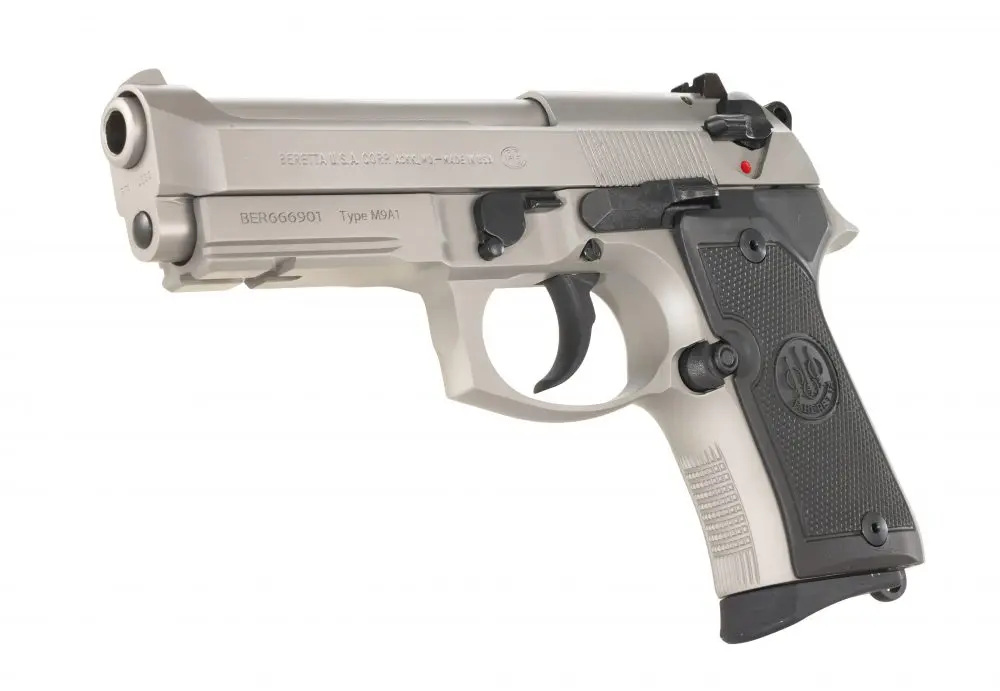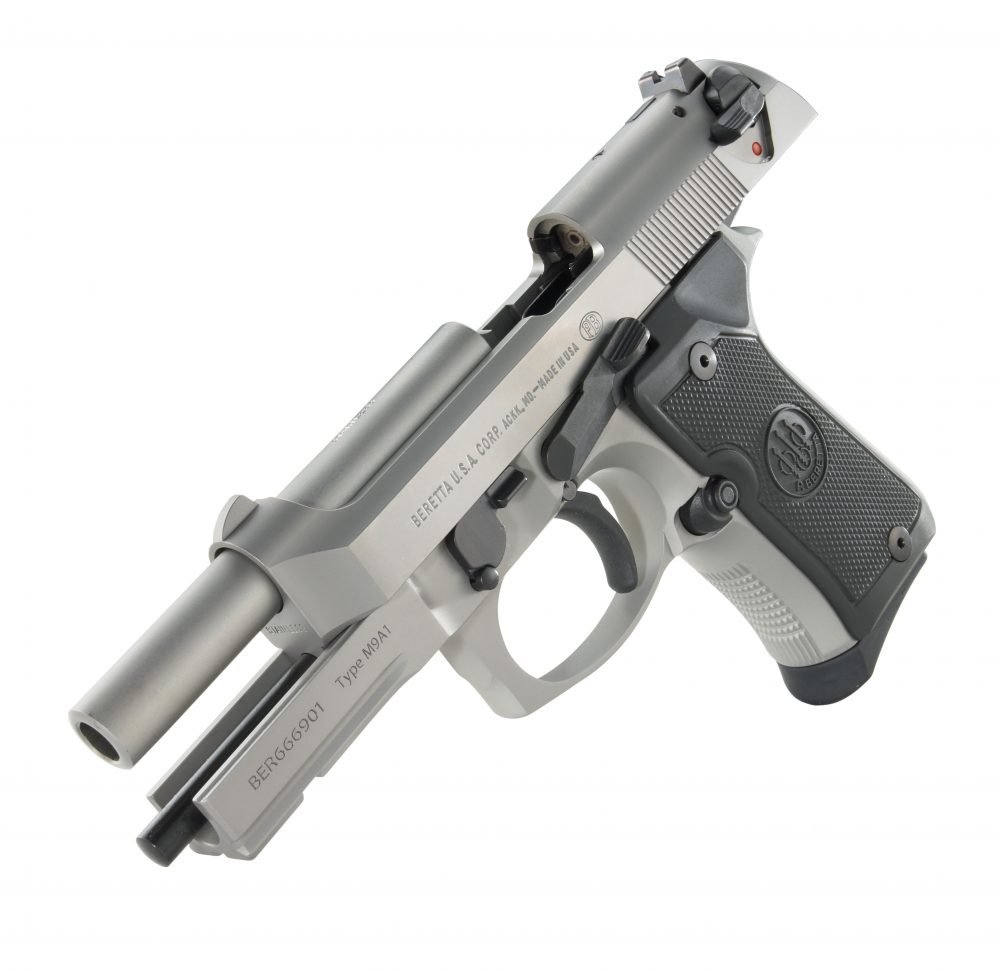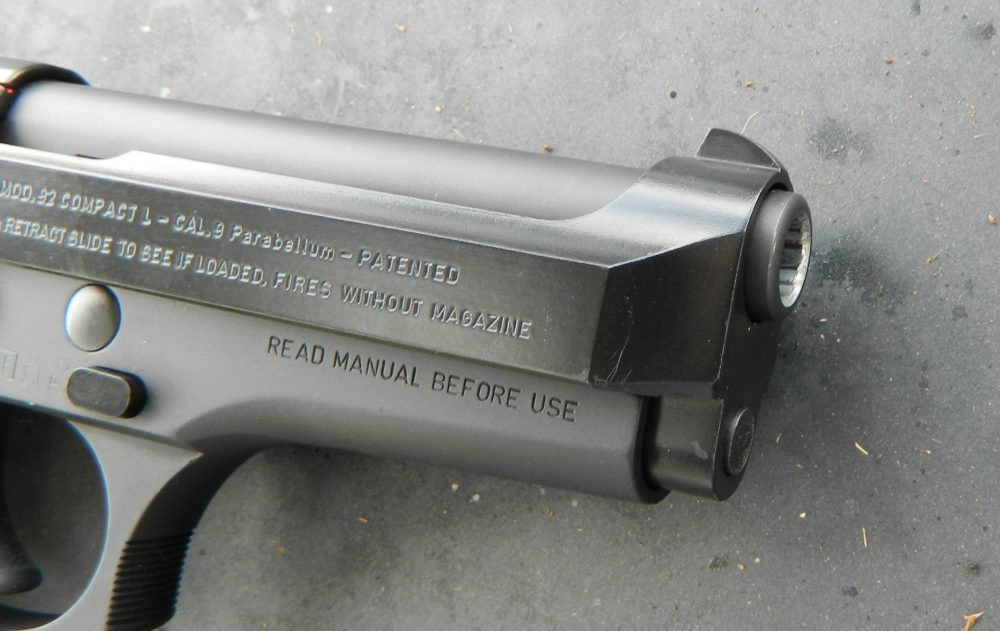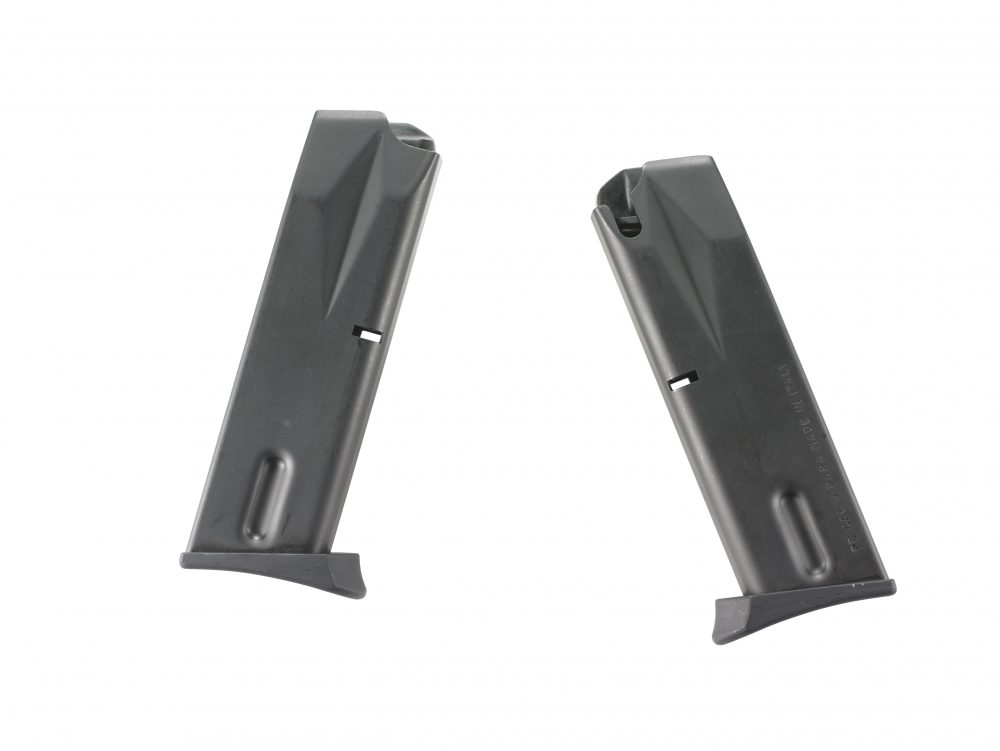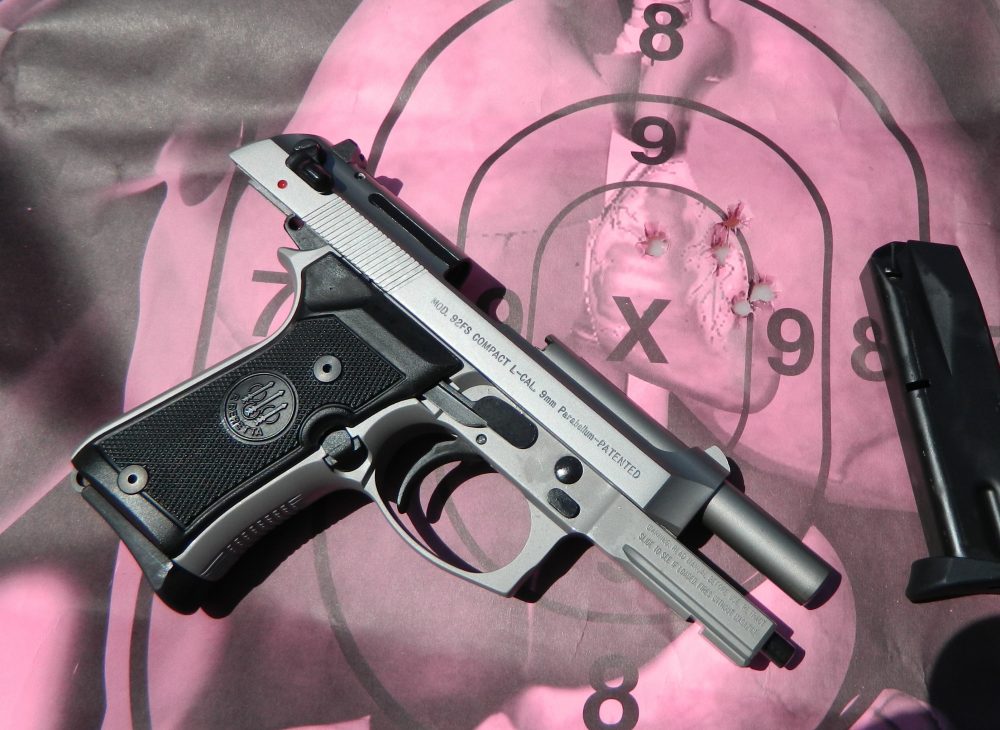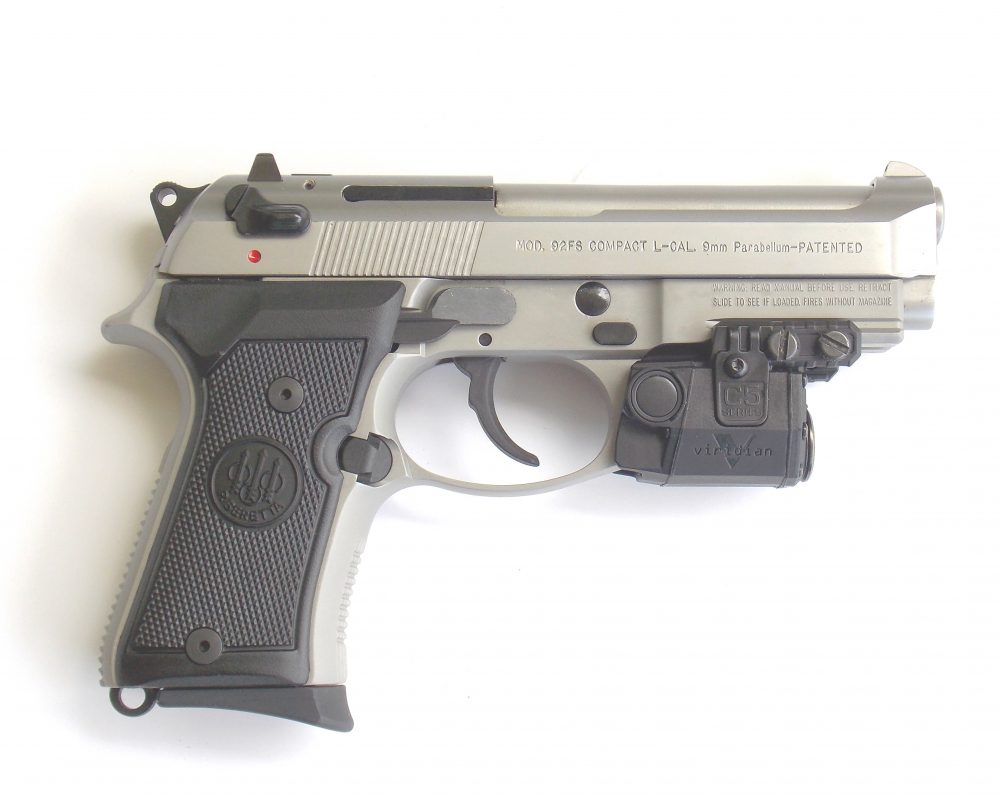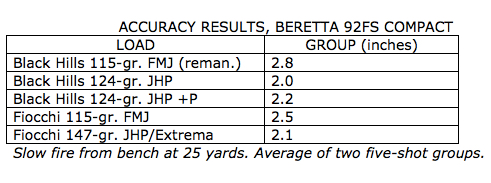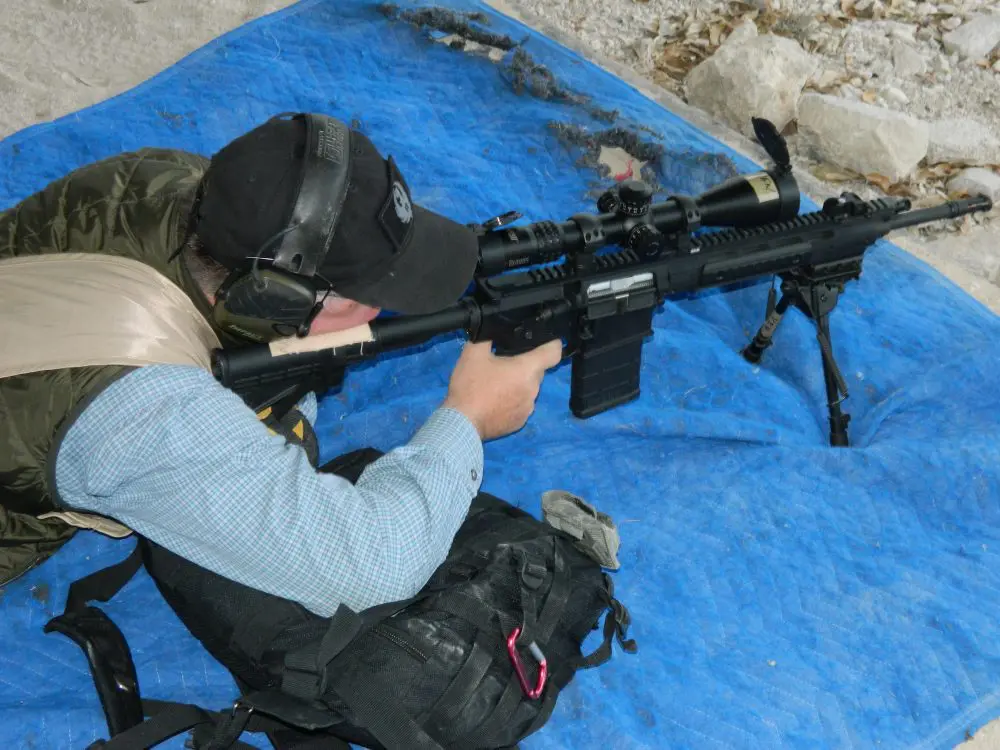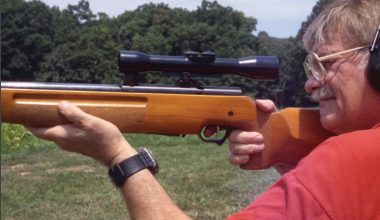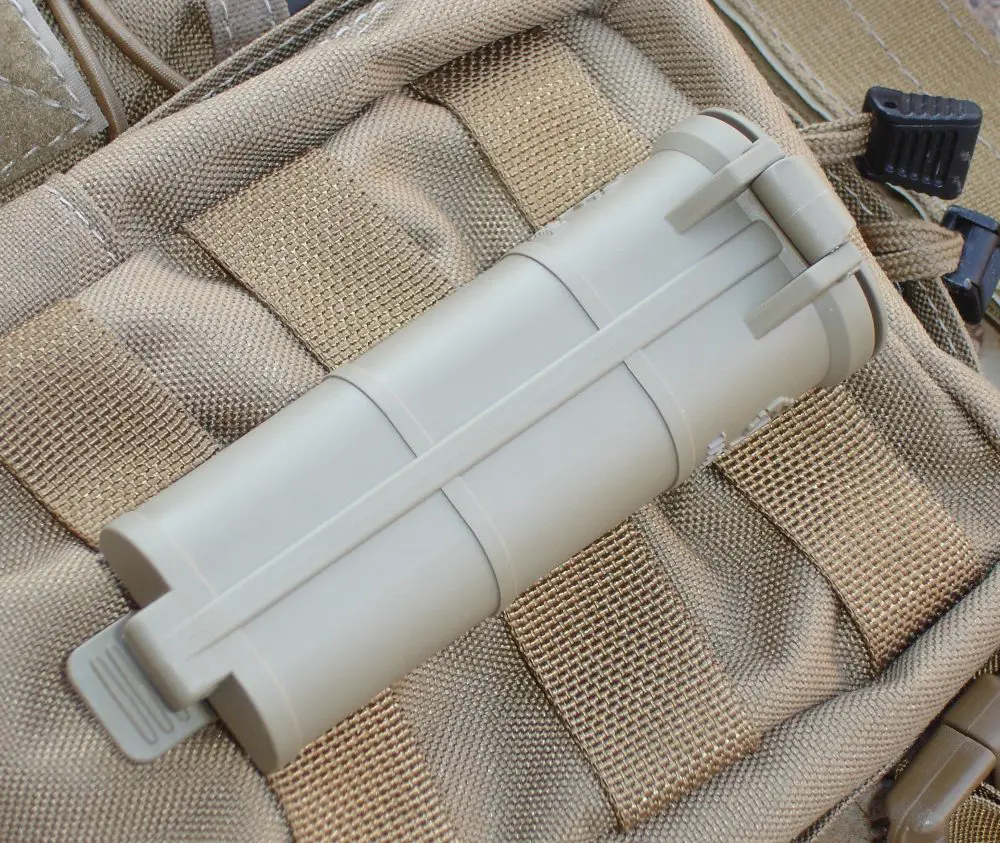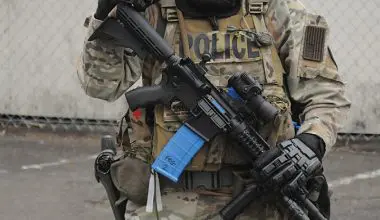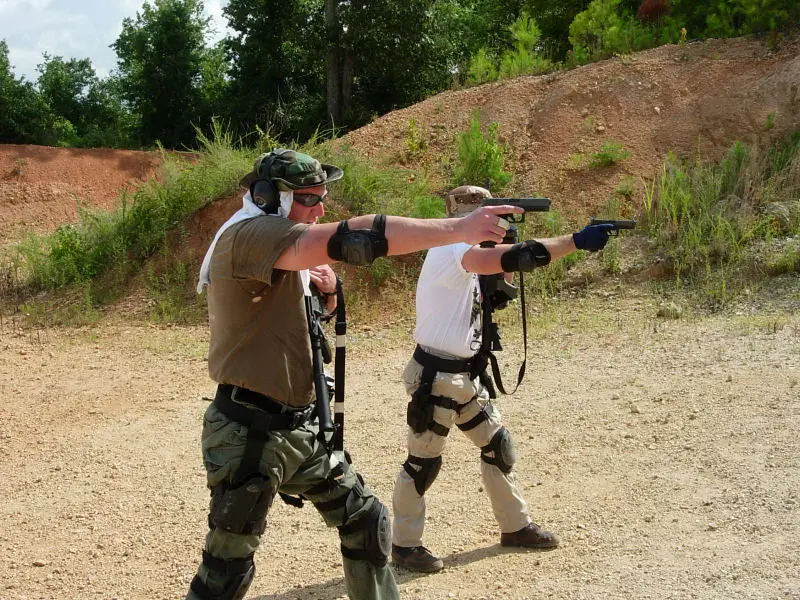We all have our favorite firearms, but when training individuals I reserve comment on the gear students show up with. Unless an individual has selected an inappropriate or unsafe handgun—and I have seen a cracked frame with a screw driven into it—I do the best I can to point out the pistol’s good points. If the weapon is an institutional issue, I teach these men and women how best to use it. There is no need to undermine anyone’s confidence in the issue handgun.
I have experienced poor choices in agency issue but focused on the strong points of the handgun and my own skill. During the past few years, I have had the honor of training a number of military personnel. My evaluation of the Beretta 92 pistol is based largely upon these experiences.
Beretta 92FS Compact is made of quality materials with features based on the proven M9 service pistol.
Overall student performance with the Beretta 92 has been excellent by any standard. Many students purchase Beretta 92 9mm handguns for personal use, among them both of my sons and a daughter-in-law. Over time I have gained respect for the Beretta 92, largely because I cannot recall a malfunction during class.
Those using the Beretta 92 are not always soldiers. One memorable student was a determined senior lady who showed up with a range bag filled with Beretta magazines and a full-size Beretta 92 pistol.
Slide lock, takedown lever, magazine release and safety, and decocker lever are all well placed for positive manipulation.
Table of Contents
BERETTA M92FS
The Beretta M9 is a proven handgun in police and military circles and by any standard suitable for personal defense. The 9mm cartridge is widely available, affordable, and highly developed. The Beretta M92FS is a short recoil operated self-loader with a double-action/single-action trigger. The Beretta differs from almost every other handgun in use in that it doesn’t use locking lugs or angled camming surfaces with the locked breech action.
The Beretta features a locking wedge first used in the Mauser M96 handgun over 100 years ago. The system has stood the test of time, although it makes for a handgun a bit wider than some. The Beretta 92 is in many ways a highly developed Walther P38.
The Beretta uses a single recoil spring rather than the dual recoil spring of the Walther, and the Beretta incorporates a high-capacity magazine into the design. In common with the Walther P38, the M9’s double-action first shot trigger is operated by transferring energy to the hammer from the trigger by means of an exposed drawbar on the side of the frame. The trigger both cocks and drops the hammer.
Recessed crowned barrel and excellent fitting are attributes aiding Beretta’s accuracy potential.
After the first shot is fired, the slide recoils and cocks the hammer for subsequent single-action fire. A slide-mounted decocker serves to lower the hammer from the single-action mode. This decocker also serves as a manual safety. There is a positive firing pin block. When the chamber is loaded, the extractor protrudes, acting as a loaded chamber indicator. The slide is steel and the frame is aluminum.
The Beretta field strips by rotating a lever on the left side of the frame. The pistol is easy to maintain and requires little maintenance other than cleaning and lubrication. The open top slide may lighten the pistol, and Beretta claims the pistol is less likely to tie up due to this design. The pistol’s nearly straight-line feed from the magazine to the chamber seems to promote feed reliability more so than any other feature.
Tactically there is little that may be done with any other 9mm that cannot be done with the Beretta, given a skilled user.
Beretta magazines are famously reliable. Magazines were stiff during loading but always reliable.
M92FS COMPACT
The problem is that the pistol is large for concealed carry, and concealed carry is important to prepared Americans. The Beretta M92FS compact pistol addresses this concern. The accompanying table shows the differences in height, weight and length between the Beretta 92FS and the Beretta 92FS Compact, which is significantly shorter and lighter.
Often a compact handgun has advantages over the full-size version. The Glock 19 handles well compared to the original Glock 17, and the SIG P228 compares well to the SIG P226. The differences are in handling, heft and balance. I cannot fire these compact pistols as well on a combat course or in absolute bench-rest accuracy testing, but the trade-off in a pistol that is more easily concealed and clears leather quickly is an attractive one.
The compact Beretta pistol tested in this report is the 92FS compact, a design that features the milspec 1913 Picatinny rail. This pistol is the Inox version with stainless steel slide and barrel, and a three-dot sight treatment outlined in red, which contrasts well with the stainless sights.
I have examined a number of Beretta compact handguns in the past and have extensive experience with the standard Beretta 92 Compact. The newest 92FS version features a treatment in grip stippling and checkering that I find superior to previous applications.
Pistol exhibited excellent practical defensive accuracy.
The feel of this handgun is excellent. While the grip is wide, it fits most hands well. The geometry is such that the curve of the grip seems to fit better than the full-size version. The largest hands may suffer the small finger dangling, but can simply curl it under the grip. When firing the pistol, I was surprised by the excellent purchase given with this abbreviated grip.
Drawing primarily from a fabric/steel clip Falco brand IWB holster, the pistol proved fast from concealed carry. The grip is sufficient in size for a good grip on the draw. The pistol comes on target quickly. The red three-dot sights are particularly well received. They give an excellent sight picture and are large enough for rapid acquisition.
As for quickly moving the safety to the firing position, keep the thumb in a strong straight forward position and strike the safety as you go into the thumbs forward firing grip. With practice, you will become proficient with this technique.
RANGE EVALUATION
Initial firing drills were undertaken with Black Hills Ammunition 115-grain FMJ remanufactured loads. These “blue box” loads are not only a good resource for affordable practice, but made to the same exacting standards as all Black Hills loads.
In double-action mode, the Beretta delivered X-ring hits on demand to ten yards. Concentration and coordination are demanded when firing a double-action first-shot handgun. The Beretta’s trigger is long but smooth and can be mastered with practice. There is some stacking at the end of travel, SOP for the double-action first-shot handgun. Estimated double-action trigger press is 12 pounds.
The single-action press is crisp and tight, with no creep or discernible backlash. Single-action trigger compression is four pounds even—an excellent factory trigger. Control was good in single-action mode.
The Beretta demonstrates little muzzle flip with most 9mm Luger loadings. Moving to service-grade loads, the pistol proved reliable with Black Hills 124-grain JHP and JHP +P, Fiocchi 115-grain FMJ practice load, and Fiocchi 147-grain Extrema. A quantity of steel-cased ammunition and lead bullet handloads were also fired. Recoil was not a factor, and the pistol never failed to feed, chamber, fire or eject. The pistol is pleasant to shoot and was very controllable with every load tested.
After a couple of range sessions, the Beretta 92FS Compact had 400 rounds of ammunition fired without any complications. The evaluation ended with a good impression of the handgun.
I know individuals who never fire personal defense guns for groups. Groups do not save lives. Firing at small targets at known and unknown ranges is a greater indicator of practical accuracy. Just the same, the Beretta was fired for absolute accuracy.
This compact handgun is more accurate than many full-size service pistols. The nicely crowned muzzle and overall good fit are part of the equation; the rest is the good sights and trigger.
My only complaint is that the magazines were stiff and difficult to load, but the feed lips were not sharp and the magazines always functioned.
Viridian C5 light is compact and proved to be a good match for the Beretta.
SUMMARY
Comparing it to others in the same size and weight class, the Beretta 92FS Compact exhibits several advantages. The slide lock is capable of rapid manipulation, but not likely to be inadvertently pressed, locking the gun to the rear during a firing string, and neither is it in a position for the thumb to ride the slide lock and cause the slide to fail to lock open on the last shot. The slide is easily racked—there is plenty of leverage due to the handgun’s geometry. The safety is positive in operation.
While the true safety is between the ears of the user, the combination of safety features—manual safety, double-action first-shot trigger, and positive firing-pin block—are appreciated.
The original intent of the test was to evaluate the 92FS Compact as a choice for those who favor the Beretta 92 but wish to own a more compact weapon. The 92FS Compact may stand on its own merits in comparison to any compact 9mm handgun.
Bob Campbell is a writer in the firearms, personal defense and outdoors field with several thousand published articles, columns and reviews and ten books. Bob holds a degree in Criminal Justice and has more than thirty years police and security experience. He has trained hundreds of shooters including police and military.
SOURCES
BERETTA U.S.A. CORP.
(800) 237-3882
www.beretta.com
BLACK HILLS AMMUNITION
(605) 348-5150
www.black-hills.com
FIOCCHI AMMUNITION
(417) 725-4118
www.fiocchiusa.com
